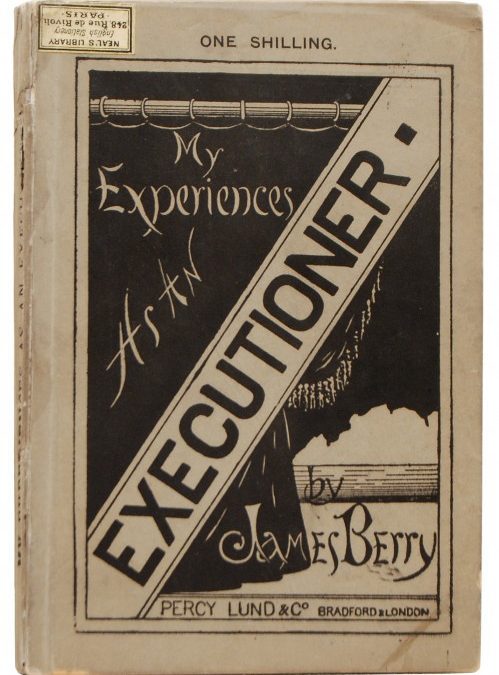
My Experiences as an Executioner
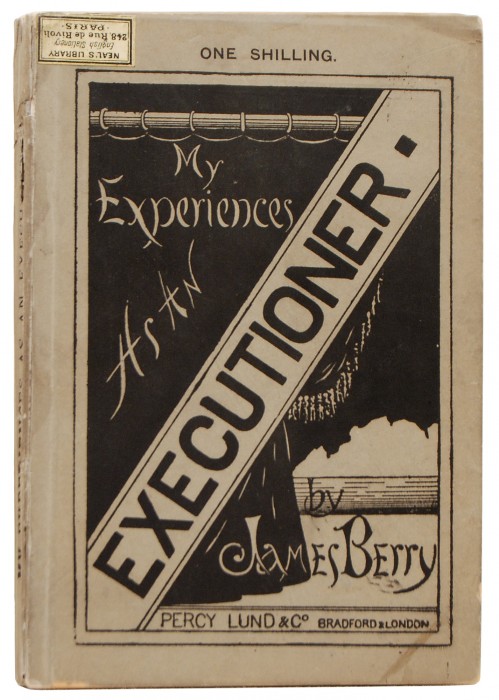
First edition of My Experiences as an Executioner by James Berry (1892).
A particularly uncommon and interesting book, My Experiences as an Executioner (BOOK SOLD) is the memoir of James Berry (1852–1913), the UK’s first truly literate hangman, and the first to write and speak publicly about his position.
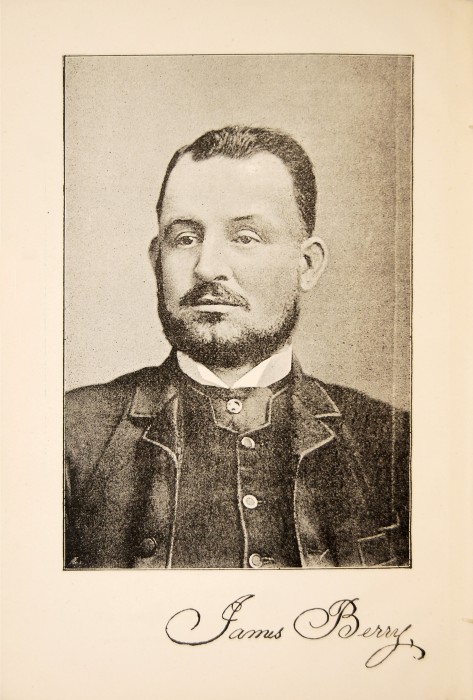
Frontispiece portrait of James Berry.
Berry carried out 131 hangings in 7 years in office (1884–91) and is known for his mathematical refinement of the long-drop method, first employed by William Marwood in the 1870s. The traditional short-drop method resulted in slow strangulation while the prisoner was conscious, but the long-drop broke the neck immediately, resulting in a quicker and less gruesome end.
Berry improved this technique by calculating the correct length of rope needed for bodies of various weights, and some of his charts are included in this volume.
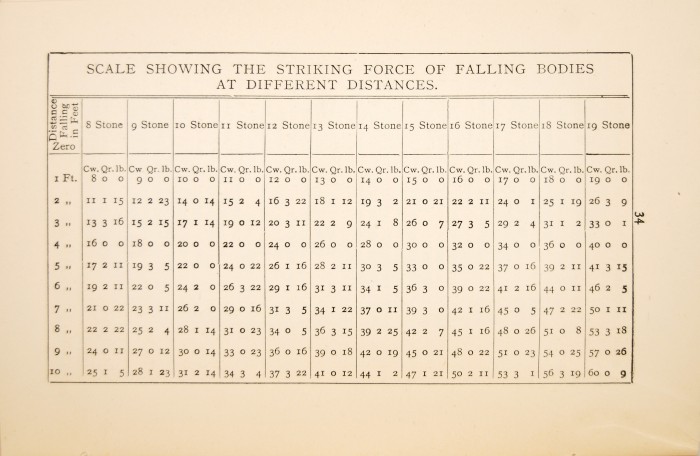
Berry is also famous as the hangman who failed to execute the murderer John Babbacombe Lee in 1885. Despite successful testing of the trapdoor prior to the execution, it failed to open once the condemned man was standing on the scaffold, and he survived two further attempts on the same day, with the result that his sentence was commuted. Though some attributed this to divine providence, it was later determined that faulty construction of the gallows was to blame.
Berry includes an account of that incident, as well as his version of the event that contributed to his leaving office. In 1891 he was called to perform the execution of John Conway at Liverpool, but his calculation of the necessary length of rope was disputed by the prison doctor, and the length which was eventually agreed-upon resulted in the near decapitation of the prisoner. Following this event, and mounting antipathy from the authorities for other reasons, he submitted his resignation.
Probably the most fascinating aspect of the book are Berry’s recollections of notable executions and criminals, his discussions of their crimes, and analysis of their demeanors at trial and death. There is also a chapter of his opinions on various execution methods used around the world, with his conclusion that the British long-drop was the most humane. Overall, the book is a sensitive and thoughtful account of what Berry himself admitted was a troubling profession, and the book is peppered throughout with his views on the moral and social implications of capital punishment.
Following his stint as hangman, Berry toured as a speaker and later became an evangelical Christian. And though he claimed to be anti-capital punishment, he applied for the post of executioner again in 1902 and was denied.
This memoir was reprinted in 1972, but first editions such as this copy are extremely uncommon on the market, particularly in such nice condition, and an academic library search returns only seven institutional copies. We also have in stock a first edition of The Reluctant Hangman (BOOK SOLD), a 1956 biography of Berry by Justin Atholl.
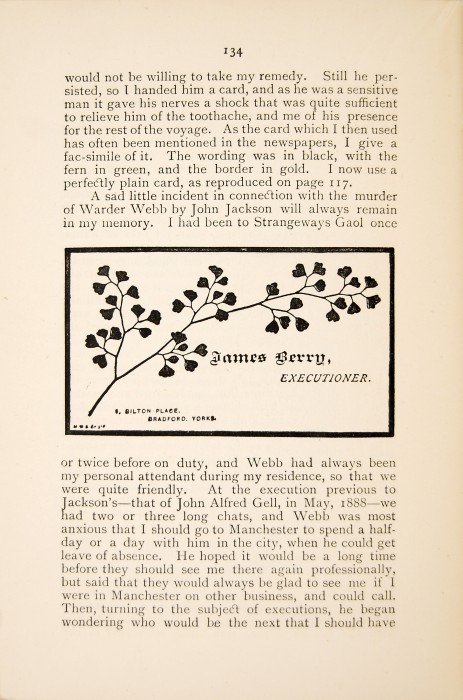
Above, Berry’s business card. How great would it be if one or two of these still existed somewhere?
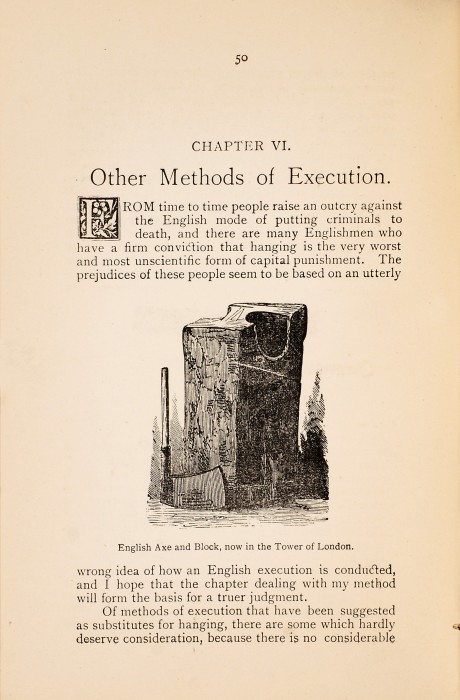
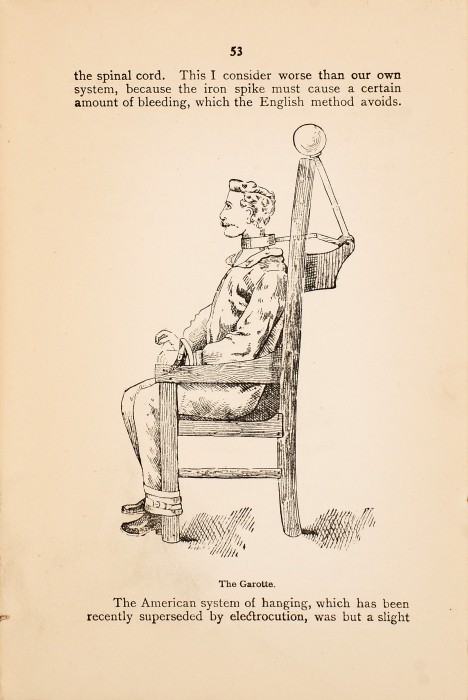
Above, the garotte, a method of execution of which Berry disapproved.
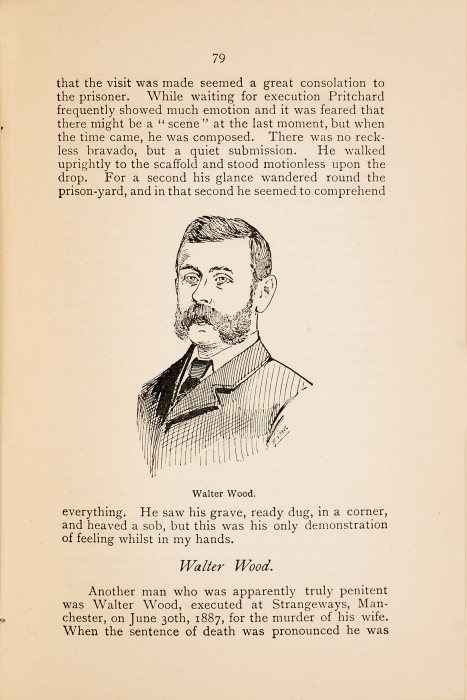
Above and below, profiles of two of the criminals included in the memoirs.
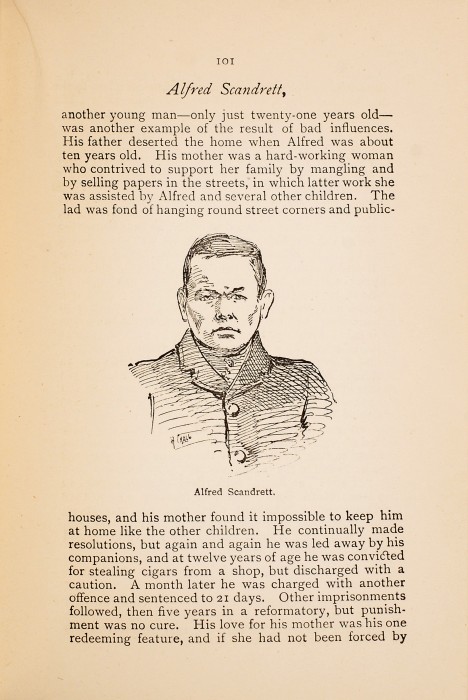
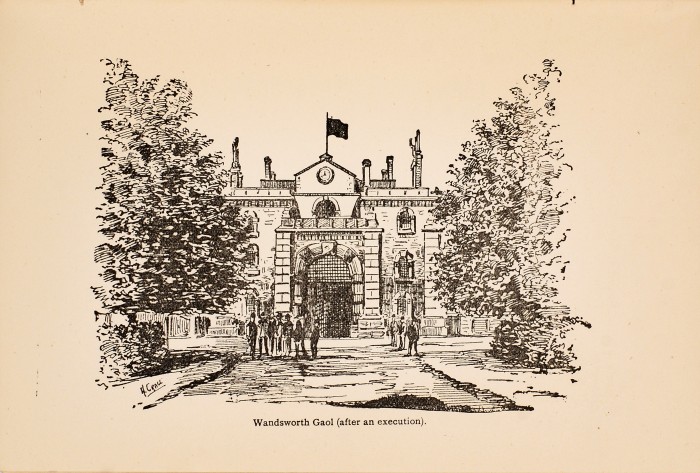
Wandsworth Goal.
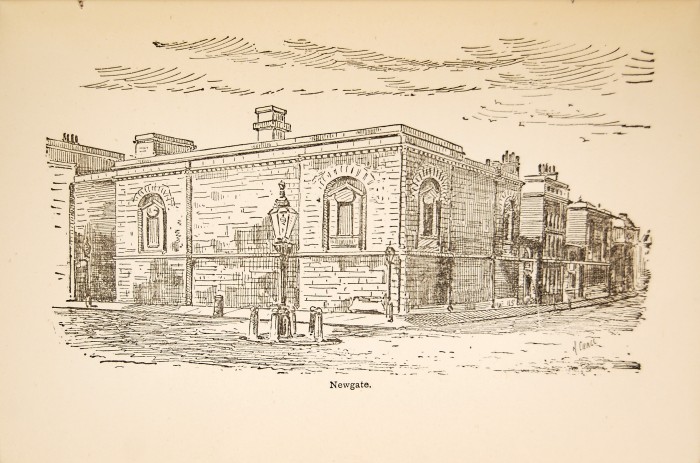
Newgate.

Recent Comments